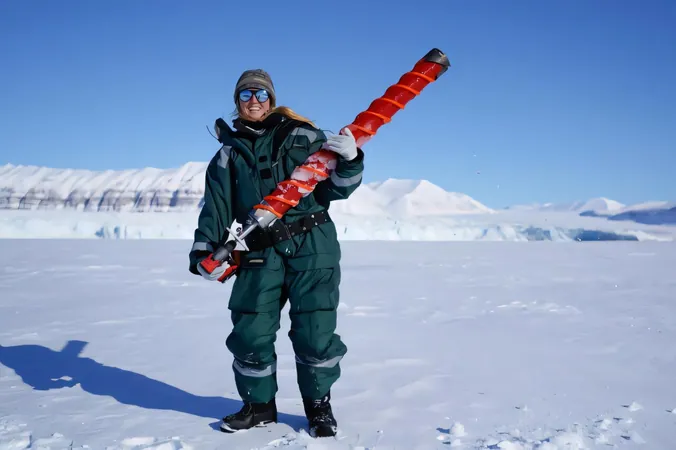
Alarming Sea Ice Decline: A Catastrophe for Polar Food Chains!
2024-12-11
Author: Charlotte
Introduction
As climate change accelerates, the rapid melting of sea ice and ocean acidification are wreaking havoc on vital microscopic algae, which serve as the foundational food source for an array of marine life, including fish, krill, and other miniature organisms that sustain larger predators such as whales, seals, and penguins.
Recent Trends
Recent years have seen a dramatic decline in sea ice, particularly in Antarctica, which has reached record low levels for four consecutive years. Experts estimate that by 2050, the Arctic Ocean could be completely devoid of ice during the summer months. This decline poses a significant threat to polar ecosystems that depend on stable sea ice habitats for microalgae growth.
Dr. Rebecca Duncan's Research
Dr. Rebecca Duncan, a leading polar marine ecologist, has devoted the past eight years to studying these changes in polar regions. With a Ph.D. from the University Technology Sydney (UTS) in partnership with UNIS Svalbard, Dr. Duncan's groundbreaking research has recently earned her the prestigious Australian Institute of Nuclear Science and Engineering Thesis Gold Medal. Furthermore, she has been recognized as a 'Superstar of STEM' by Science and Technology Australia, highlighting her commitment to promoting women in scientific research.
Ecosystem Dependence on Microalgae
'One-tenth of the planet's oceans are frozen, encompassing the rapidly evolving Arctic, Antarctic, and Southern Ocean,' Dr. Duncan emphasized. 'These delicate ecosystems are reliant on microscopic algae as the bedrock of their food webs.'
These tiny algae are rich in essential nutrients like fats, proteins, and carbohydrates, supporting a range of wildlife from krill to fish, polar bears, and whales. However, the nutritional quality of these algae is heavily influenced by species diversity and their adaptability to ongoing environmental shifts.
Impact of Environmental Changes
Dr. Duncan's research reveals that factors such as ocean acidity, temperature fluctuations, and light availability beneath the ice greatly influence the composition of microalgae. While increased light exposure and warmer waters initially promote higher fat content in certain algae species, there exists a critical tipping point where these beneficial accumulations plateau, leading to a decline in nutrient availability for marine animals.
She warns, 'Krill and other zooplankton rely on these microalgae for reproduction at specific times of the year. A failure in their reproductive cycles disrupts the food chain, putting fish populations—and by extension, seals and other large predators—at risk.'
The Future of Microalgae
As sea ice melts at an unprecedented rate, the remaining ice may no longer offer a conducive environment for microalgae, which require stable conditions for survival. 'If we continue to lose sea ice,' Dr. Duncan cautions, 'those microalgae that depend on it will face extinction. The big question remains: can these ecosystems function without ice algae, and if so, what will replace them?'



 Brasil (PT)
Brasil (PT)
 Canada (EN)
Canada (EN)
 Chile (ES)
Chile (ES)
 Česko (CS)
Česko (CS)
 대한민국 (KO)
대한민국 (KO)
 España (ES)
España (ES)
 France (FR)
France (FR)
 Hong Kong (EN)
Hong Kong (EN)
 Italia (IT)
Italia (IT)
 日本 (JA)
日本 (JA)
 Magyarország (HU)
Magyarország (HU)
 Norge (NO)
Norge (NO)
 Polska (PL)
Polska (PL)
 Schweiz (DE)
Schweiz (DE)
 Singapore (EN)
Singapore (EN)
 Sverige (SV)
Sverige (SV)
 Suomi (FI)
Suomi (FI)
 Türkiye (TR)
Türkiye (TR)
 الإمارات العربية المتحدة (AR)
الإمارات العربية المتحدة (AR)